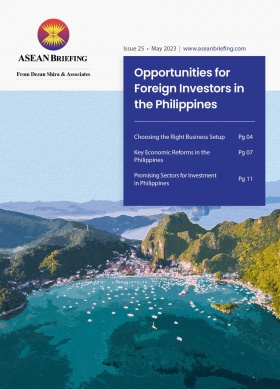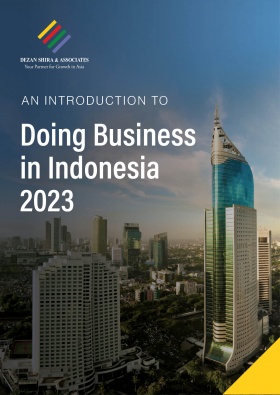Exploring Australian Trade and Investment Prospects in Indonesia
Indonesia’s stable economic growth, burgeoning middle-class, and improving infrastructure provide an array of opportunities for Australian investors.
Boost under IA-CEPA trade agreement
Indonesia and Australia are poised to expand and diversify their economic partnership after ratifying the Indonesia-Australia Comprehensive Economic Partnership Agreement (IA-CEPA) in February 2020.
Under the IA-CEPA, 99 percent of Australian goods can enter Indonesia duty-free or under significantly reduced tariffs. Indonesia has made it easier to issue import permits for essential Australian products, such as live cattle, feed grains, and other agricultural products.
Australian companies can also enjoy majority ownership of businesses in specific sectors in Indonesia. The sectors include:
- Telecommunications;
- Professional services – urban planning, architecture, engineering, and surveying;
- Construction services;
- Education – university education, vocational training;
- Energy – geothermal plants, electrical power installation, and construction, power plants (more than 10 MW), oil and gas platform construction;
- Wastewater management;
- Transport – highways, railways, bridges, tunnel concessions;
- Mining services – contract mining, mine site preparation;
- Healthcare – large hospitals, pathology, paramedic, and dental specialist services; and
- Tourism – majority ownership of three, four, and five-star hotels, restaurants, cafes and bars, tourism consultancy, and tour operators.
Background
Diplomatic relations between Indonesia and Australia began in 1949. Although the relationship went through several strained periods (notably the Indonesia-Malaysia confrontation and the East Timor crisis), bilateral trade reached A$18.3 billion (US$12.4 billion) during 2021-2022, an increase from A$17.8 billion (US$12.1 billion) in 2018-2019.
Australia’s trade surplus
Australia records a trade surplus of over US$3 billion. In 2022, Australia exported just over US$7 billion of goods to Indonesia. More than US$3 billion of this was attributed to the exports of cereals and mineral fuels and products of their distillation.
Further, the country also exported more than US$700 million of pearls and precious stones, US$660 million of mineral ores, US$410 million of meat products, as well as close to US$400 million of live animals.|
Top 10 Goods Exported from Australia to Indonesia in 2022 |
|
|
Commodity |
Value (US$) |
|
Mineral fuels, oils, distillation products |
1.71 billion |
|
Cereals |
1.47 billion |
|
Pearls, precious stones |
721 million |
|
Ores |
669 million |
|
Meat and edible ofal |
410 million |
|
Live animals |
393 million |
|
Cotton |
360 million |
|
Dairy products |
218 million |
|
Aluminum |
173 million |
|
Machinery, nuclear reactors |
169 million |
Source: Trading Economics
Australia imported more than US$430 million worth of electronic equipment from Indonesia in 2022. This was followed by US$317 million for machinery and nuclear reactors, mineral fuels (US$300 million), and fertilizers (US$289 million).
|
Top 10 Goods Imported to Australia from Indonesia in 2022 |
|
|
Commodity |
Value (US$) |
|
Electronic equipment |
438 million |
|
Machinery, nuclear reactors |
317 million |
|
Mineral fuels |
300 million |
|
Fertilizers |
289 million |
|
Wood and articles of wood |
275 million |
|
Footwear |
217 million |
|
Apparel |
199 million |
|
Articles of pulp, paper, and board |
139 million |
|
Tobacco |
136 million |
|
Furniture |
135 million |
Source: Trading Economics
New opportunities for Australian investors
With the IA-CEPA in force and as one of the fastest-growing economies in the Asia-Pacific, Indonesia offers several opportunities for Australian investors, particularly since the archipelago is predicted to be the world’s fifth-largest economy by 2030.
Collaboration on electric vehicle battery supply chain
Indonesia aims to become an electric vehicle (EV) battery manufacturing hub. The country has an estimated 21 million tons of nickel reserves — considered to be the largest in the world — and the government has developed a robust downstream industry to realize Indonesia’s target of becoming one of the top three EV battery producers in the world.
Moreover, to complement its nickel-based battery industry, the country is also developing lithium refineries and anode material production facilities. However, Indonesia lacks rich deposits of lithium.
Australia supplies approximately half the world’s lithium and can export this mineral to Indonesia. Most of Australia’s lithium exports currently head to China.
Indonesia’s Minister for Maritime Affairs and Investment, Luhut Binsar Pandjaitan, stated that the government planned to import 60,000 tons of lithium from Australia starting in 2024. The lithium will be processed at the Morowali Industrial Park in Morowali, Central Sulawesi province, where the government inaugurated a hydrometallurgical nickel laterite production facility in October 2022. The plant has the capacity to produce 50,000 tons of pure nickel annually.
Further, Australia’s close geographical location to Indonesia puts it at an advantage compared to other markets, such as China or the US.
Halal food
The IA-CEPA provides preferential tariff treatments for live cattle and beef. For 2022, Indonesia gave Australia a quota of 621,920 head of male cattle at a zero percent tariff rate. On average, Indonesia imports over 500,000 heads of cattle from Australia annually, or 62 percent of Australia’s total cattle and beef exports.
For the 2021-22 financial year, Australian red meat and livestock exports to Indonesia totaled A$1.1 billion (US$748 million), or seven percent of Australia’s total exports.
Australia’s agricultural products, particularly its cattle, and beef, are important merchandise exports to Indonesia. Indonesia is the largest export market for Australian feeder cattle and frozen beef and the fifth largest market for boxed beef. This is even though beef consumption per capita is only 2.23kg in Indonesia, compared to the world average of 6.4kg per capita.
Australia also accounts for 63 percent of Indonesia’s total beef offal imports. After a decline in imports of the product in 2020-21 due to the pandemic, Indonesia imported its second-largest volume of Australian beef offal in 2021-22, totaling over 59,000 tons.
An increasing and expanding Indonesian middle class with a growing preference for beef is expected to continue to drive demand for Australian red meat. Further, this also presents opportunities for Australian Halal food exports to the world’s largest Halal food market – Indonesia’s Muslim consumers are expected to spend US$247 billion on Halal food and beverage by 2025.
Australia is the fourth-largest exporter of Halal food and beverages to Organization of Islamic (OIC) countries and exports are expected to double to A$14.6 billion (US$10.9 billion) over the next decade. There is also growing potential to expand beyond meat and into other products and services ranging from banking and finance to beverages to pharmaceuticals to fashion.
Healthcare
Given its large market size, Indonesia’s healthcare sector presents a lucrative opportunity for Australian investors.
The government’s annual spending on healthcare has skyrocketed since the implementation of the universal healthcare program (BPJS) in 2014, which has now grown to be the world’s largest, covering some 200 million people. Every citizen and expatriate is mandated to join, and companies must register their employees to the program, paying a percentage of the premiums.
Approximately two million Indonesians spend an average of 100 trillion rupiah (US$6.67 billion) on medical services abroad. The government is trying to reduce this trend by making it easier for foreign investors to build and own medical facilities in the country. Australian healthcare providers Docta and Aspen Medical signed a US$1 billion agreement with Indonesian company PT Jasa Sarana in 2020 to begin constructing 23 hospitals and 650 new clinics in the country over the next 20 years.
What can Australian investors do?
- Evaluate market potential: Conduct a thorough market analysis of Indonesia to understand the investment opportunities, market trends, and consumer demand in various sectors such as telecommunications, professional services, construction, education, energy, healthcare, tourism, and more.
- Develop partnerships: Establish strategic partnerships with local Indonesian companies to navigate the market effectively, leverage their expertise, and comply with local regulations. Collaborate with Indonesian firms to explore joint ventures, technology transfers, or distribution agreements.
- Leverage IA-CEPA benefits: Capitalize on the advantages provided by the Indonesia-Australia Comprehensive Economic Partnership Agreement (IA-CEPA). Understand the duty-free or reduced-tariff entry for Australian goods and services and utilize these preferential treatments to enhance market access and competitiveness.
- Understand cultural nuances: Recognize the importance of cultural understanding and adaptability when doing business in Indonesia. Familiarize yourself with Indonesian customs, business etiquette, and local norms to build strong relationships and foster successful partnerships.
- Establish local presence: Consider establishing a local presence in Indonesia through representative offices, subsidiaries, or joint ventures to gain a deeper understanding of the market, enhance business relationships, and provide better customer support.
- Seek government support: Engage with relevant government agencies, such as the Australian Trade and Investment Commission (Austrade) and the Indonesian Investment Coordinating Board (BKPM), to seek guidance, incentives, and support for your investment ventures. Stay informed about any policy changes or incentives for foreign investors.
- Continuously monitor and adapt: Keep a close eye on market dynamics, regulatory changes, and consumer preferences in Indonesia. Continuously adapt your strategies and offerings to meet evolving market demands and maintain a competitive edge.
By following these action steps, Australian businesses can seize the investment opportunities in Indonesia and establish a strong presence in one of the fastest-growing economies in the Asia-Pacific region.
For more detailed insights and to discuss Australian investment opportunities in the Indonesian market, please schedule a conversation with Ines Liu at ines.liu@dezshira.com.
About Us
ASEAN Briefing is produced by Dezan Shira & Associates. The firm assists foreign investors throughout Asia and maintains offices throughout ASEAN, including in Singapore, Hanoi, Ho Chi Minh City, and Da Nang in Vietnam, in addition to Jakarta, in Indonesia. We also have partner firms in Malaysia, the Philippines, and Thailand as well as our practices in China and India. Please contact us at asean@dezshira.com or visit our website at www.dezshira.com.








